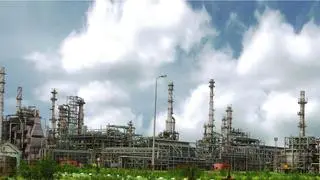Mahindra Renewables was one of the three companies that quoted ultra-low prices for solar power in the recent tariff-based auction of capacity in Madhya Pradesh. The winning tariff of ₹2.97 in the first year, or ₹3.30 averaged over 25 years, is so low that despite the fact that many favourable auction conditions empowered bidders to quote low, there are lingering doubts over the projects’ viability.
Mahindra Renewables owns solar-power plants and sells energy, and is a wholly owned subsidiary of Mahindra Susten Pvt Ltd, whose business is to build solar projects for others. Including the 250 MW it won in the Madhya Pradesh auction, Mahindra Renewables has a portfolio of 580 MW; while its parent company has built projects worth 680 MW for other solar-energy companies.
Basant Jain, CEO of Mahindra Susten, and Director, Mahindra Renewables, explained to BusinessLine why the tariff of ₹2.97 was not foolhardy. Edited excerpts:
Is the tariff of ₹2.97 (or ₹3.3, levellised) ‘irrational exuberance’?
It may appear to be so on the surface. But if you look at the auction process, market conditions, favourable tender terms, the accommodative project structure and site conditions, you will see that the tariffs are rational and provide enough headroom for developers to showcase viability of the projects at this tariff.
Are such low tariffs here to stay or was the ₹2.97 just a one-off?
As of today, we believe this is a one-off case as other transactions today are not structured in a such transparent, fair and bankable manner as this one. The RUMS (Rewa Ultra Mega Solar) management, the State government, DMRC and their advisory teams — IFC, Sgurr, Trilegal and PWC — have identified the risks that are best taken by the State governments and allowed the enterprising abilities of the developers to flourish. The structuring of this tender reduces the risks for developers and that is why many players are willing to go down below ₹3 per kWh. The project also benefits from a credible procurer like the Delhi Metro Rail Corporation, even if only for 25 per cent capacity, and the State guarantee which minimised the risks for payment delay. If upcoming transactions are structured in a similar manner, the industry is likely to witness several sustainable projects at these tariff levels.
What are the key risks in the execution of the projects and how do you propose to mitigate them?
For this project, execution remains a key challenge ahead of us, given the topography and soil strata of the site. We have been fortunate that this tender was open for almost a year. The tender was launched on March 16, 2016, providing us with sufficient time to go through the site multiple times and to familiarise with every nook and corner of the site. With a detailed technical analysis already carried out, the project execution-related risks mitigate to a certain extent. Additionally, the comfort of having 18 months, from 90 per cent land hand-over, to execute the project, also helps.
The rupee-dollar fluctuation has a significant impact on the project cost, and there are many players who take calculated risks around the hedging. We believe the availability of foreign funding or the buyer’s credit provides a headwind for cost optimisation, but one need to ensure that the project is kept immune from the forex fluctuations by means of hedging.
There is a criticism that at these tariff levels, project quality will suffer, and the generation will be very poor after 4-5 years. How would you react to that?
The fears do not have any basis. The project is completely viable with certain optimisations. We being part of a responsible and reputed group, do not believe in taking up projects which necessitate such a hit on quality. Our parent, Mahindra Susten, has been offering Solar EPC-cum-O&M solutions for over five years and there have been no uncertainty of performance or quality of construction. The projects set up by Susten have been consistently over-performing the market; hence we are confident to put up a high-performing 250 MW project at Rewa.
At these levels of tariffs, there is a fear that both EPC and domestic module/cell manufacturing will go out of business. Do you agree?
Again, such fears are unfounded. Such arguments have been floating around after every bid. Every now and then the business environment changes, which calls for the complete overhaul in the way we look at the business. EPC players have been able to adapt to the changing scenario and put forth a compelling business proposition till date. At such level of tariffs, the market is ready to provide much-needed scale, business visibility, of minimum 10-GW per annum growth, and an opportunity for domestic module and cell manufacturing industry to gear up and compete with the world.








Comments
Comments have to be in English, and in full sentences. They cannot be abusive or personal. Please abide by our community guidelines for posting your comments.
We have migrated to a new commenting platform. If you are already a registered user of TheHindu Businessline and logged in, you may continue to engage with our articles. If you do not have an account please register and login to post comments. Users can access their older comments by logging into their accounts on Vuukle.